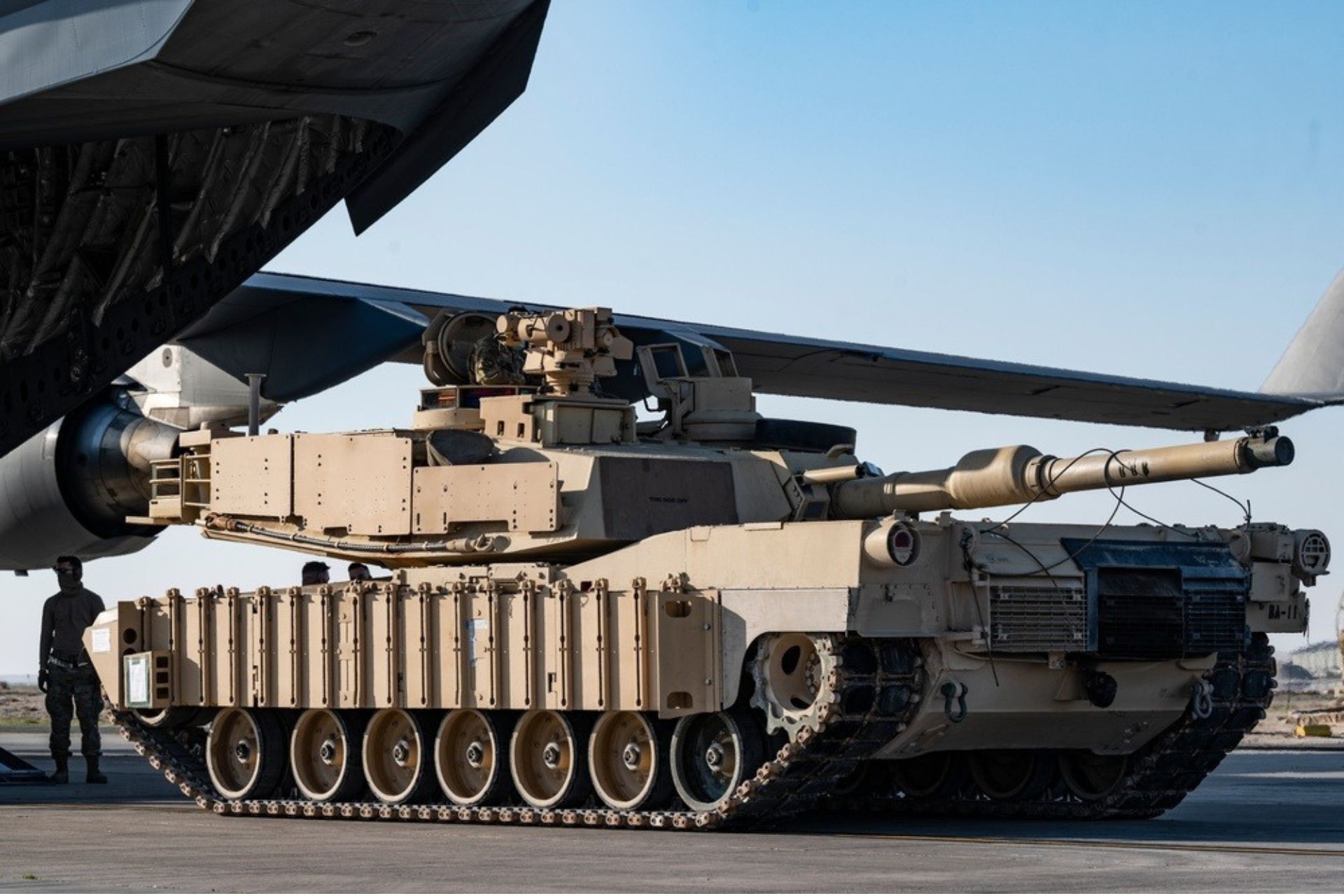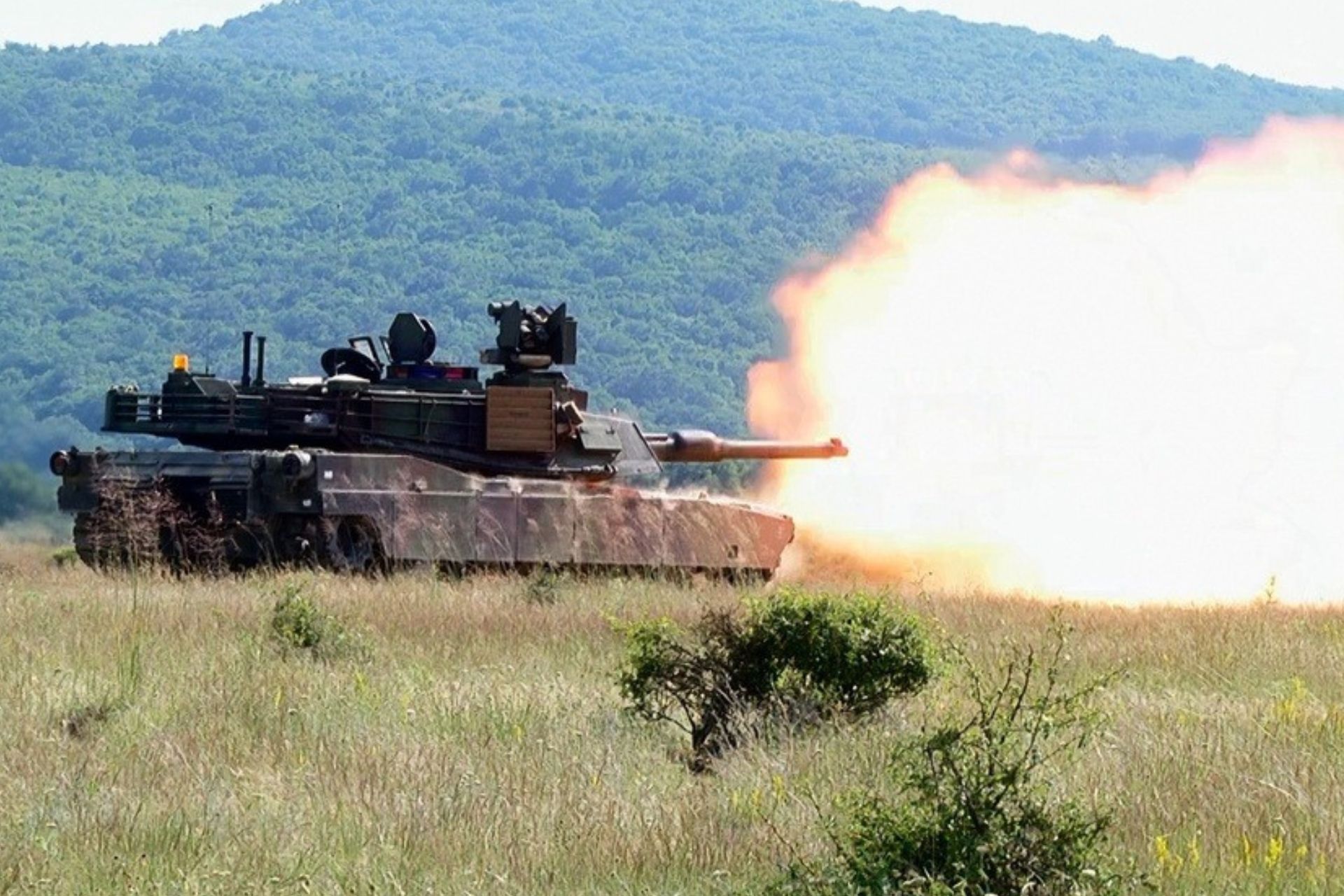Breaking News
Focus: Evolution of the Abrams Tank Turret Armor - From Traditional Steel to Ceramic and Depleted Uranium Innovations.
The M1 Abrams tank, a cornerstone of modern armored warfare, has undergone significant upgrades since its inception, particularly in its turret composite armor. This iconic main battle tank, first introduced by the United States in the 1980s, has seen various upgrades through its different models, each designed to enhance its defensive capabilities against evolving battlefield threats. Follow Army Recognition on Google News at this link

A U.S. Army M1A2 SEPv2 Abrams Tank rolls off the cargo ramp of a U.S. Air Force C-17 Globemaster III during a training event at Ali Al Salem Air Base, Kuwait, Jan. 19, 2022 (Picture source: US DoD)
Central to these upgrades is the tank's composite armor, a critical component that has been adapted and modified across successive models to improve protection and survivability. The evolution of Abrams armor follows technological progress, with the latest versions offering the most advanced protections. We can distinguish four levels of protection: standard, intermediate, advanced, and specialized.
Standard Protection
The M1A1 and M1A1/M1A2 Export models share a similar protection scheme. All three use Rolled Homogeneous Steel and High Hardness Steel, standard in most tank armor for basic ballistic protection and penetration resistance. The M1A1 integrates polycarbonate plastic for shock absorption, whereas the M1A1/M1A2 export models use rubber to enhance resilience against impacts.
Intermediate Protection
The M1A1HA/M1A2 variants combine features from both the M1A1 and M1A2, using Depleted Uranium Rods to significantly increase armor density and protection against anti-tank projectiles. This combination suggests a midpoint in the evolution of Abrams armor, integrating both traditional and advanced materials.

Soldiers with 3rd Battalion, 69th Armor Regiment, participate in a tank shoot rehearsal as preparation for a live-fire tank shoot at Novo Selo Training Area, Bulgaria, June 24 (Picture source: US DoD)
Advanced Protection
The M1A2 SEPv2 represents a leap forward in the Abrams armor technology. It incorporates Depleted Uranium Rods and Boron Carbide Ceramics, materials known for their exceptional hardness and ability to absorb high-impact energies. Like other models, it is composed of Rolled Homogeneous Steel, High Hardness Steel, and polycarbonate plastic. Additionally, this variant features a Titanium Support Framework, unlike the others with steel, for structural integrity and weight reduction, indicating a focus on enhancing protective capabilities while managing overall weight.
The M1A2 SEP, although similar to the SEPv2, does not include Boron Carbide Ceramics, positioning it slightly below the SEPv2 in terms of advanced armor but still above earlier models due to its use of composite materials and depleted uranium.
Specialized Protection
The M1A1 Export Model for the Australian Army incorporates polycarbonate plastic in its armor scheme, which is unique among export variants, as others use rubber. This material is used for impact absorption and reducing spalling, offering a specialized approach to protection focusing on mitigating the effects of secondary debris during impact. It also includes Rolled Homogeneous Steel and an additional layer of High Hardness Steel.
The Abrams tank variants, from the M1A1 to the M1A2 SEPv2 models, exhibit nuanced but crucial changes in their armor composition and structure. Initially, the tank's armor was designed with a combination of Rolled Homogeneous Steel, High Hardness Steel, and a steel support structure. This configuration provided a robust level of protection that was revolutionary at the time.
However, as threats evolved, so did the armor. The introduction of materials such as depleted uranium rods and boron carbide ceramics in later models like the M1A2 SEPv2 significantly enhanced the tank's defensive capabilities. These materials are known for their high density and hardness, offering superior resistance to penetration and damage.
Notably, the physical thickness of the turret armor was increased only twice: first in the M1A1 model in 1985 and then in the M1A2 SEPv3 in 2020. This strategic increase in armor thickness in specific areas of vulnerability indicates a targeted approach to armor improvement, focusing on areas most likely to face direct threats.

U.S. Marines with 2nd Tank Battalion, 2nd Marine Division, drive a M1A1 Abrams tank during the Combat Enhancement Training/Force Integration Training phase of Exercise Trident Juncture 18 near Storås, Norway, Oct. 25, 2018 (Picture source: US DoD)
The export versions of the Abrams, such as those sold to Australia, often feature downgraded armor configurations to comply with export restrictions and agreements. For example, export models reverted to using the original BRL-1 NERA arrays, which used rubber in their composite, offering a different balance between protection and weight.
The widespread adoption and adaptation of the Abrams tank highlight its global impact and the high regard for its protective capabilities. Many countries have integrated the Abrams into their armored corps, valuing its proven effectiveness in a variety of combat scenarios. Australia, Egypt, Kuwait, Saudi Arabia, and Iraq are among the nations that have incorporated various versions of the Abrams into their arsenals. More recently, Ukraine has also received M1 Abrams tanks from the United States to bolster its defense capabilities against Russian aggression.


























